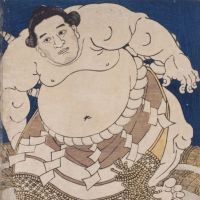Legend has it that a sumo match between gods determined the origin of the Japanese race.
Now regarded as Japan's national sport, sumo first gained popularity with the general public during the Edo Period (1603-1867), and like those ukiyo-e (woodblock prints) of great Kabuki actors, similar ones of famous sumo wrestlers were also in demand.
Around 60 sumo-wrestler nishiki-e (multi-colored prints) from the Edo Period through the Meiji Era (1868-1912) are on show, including some by Shunsho Katsukawa, who was the first artist to focus on sumo, and whose works are particularly admired for their depiction of the excitement and the tension of matches; till Aug. 28.
New Otani Art Museum; (03) 3221-4111; 4-1 Kioi-cho, Chiyoda-ku; 4-min walk from Exit D of Akasaka Mitsuke Station, Ginza or Marunouchi subway lines. 10 a.m.-6 p.m. ¥500. Closed Mon., Tur. Jul 19 July 18, and closed on July 19. www.newotani.co.jp.group/museum.



